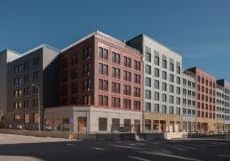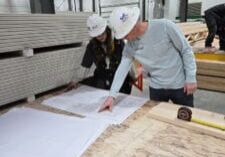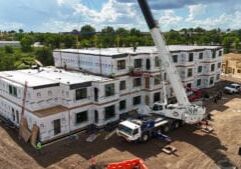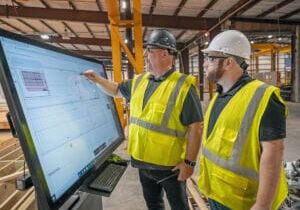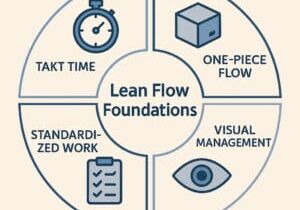Carpenter's Union Embraces Factory Built Housing to Address Labor Needs in Northern California
“We don’t have a labor shortage, we have an opportunity shortage,” said Jay Bradshaw, Director of Organizing for the Northern California Carpenters Regional Council (NCCRC). Not everyone agrees that the construction industry suffers from a labor shortage. NCCRC represents 37,500 members in 46 northern California counties and feels that labor availability is not the issue. “We have people who want to work, but with housing costs in the area, they are driving three hours to get here because they can’t afford to live in this region,” Bradshaw said.
Labor unions negotiate for higher wages and benefits for workers; higher wages, some argue, lead to higher construction and housing costs; which leads to fewer local available workers; which leads to higher housing costs. The cycle repeats continuously.
NCCRC has decided to address the issue head on – and in a manner not commonly employed by trade unions in the past. The carpenters group felt that it wasn’t in their members’ best interest to try to fight the move towards modular and offsite construction practices, as other trades have done in the past.
“We have a culture and a philosophy at the Carpenters of NorCal that when technology advances happen, we don’t try to fight it,” he says. “We want to be part of it, embrace it, support it, to stay viable in the industry, and to create more opportunities for our members. Not every organization takes that tactic”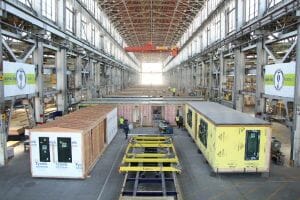
But at the same time, the assembly line manner of construction tasks in a modular factory just didn’t neatly fit the traditional separation of trades, tasks, and wages that are common in organized labor agreements. Bradshaw continued, “Can you imagine if we built cars like this? Materials showing up in a driveway and multiple trades working on their specific part of the project. We’d end up with cars each costing about $800,000! We want to create good middle-class jobs while also trying to add to the inventory of affordable housing or everyone.”
So, NCCRC created what is called a “wall-to-wall contract” with modular factories. The idea is that the workers would be trained to do all aspects of the work, including electrical and plumbing, not just carpentry. And all the work in the factory would be covered by the carpenters’ union.
With a team of 35 full-time recruiters, NCCRC has been successful by targeting underserved populations in the construction industry such as women and minorities. But it’s not just the recruiting that makes this union successful. NCCRC trains its members at a facility near the two factories it currently represents, Factory OS and RAD Urban, each employing about 100 workers.
While the pay rate in the factory is lower than in the field, NCCRC still sees the benefit of this structure. “We’re elevating folks that don’t have opportunities and we’re going to help solve the housing crisis in Northern California,” says Bradshaw. He sees this new technology (modular) as a way to address the housing shortage by making it less costly to build. He says that when developers are able to build more, that means more construction work. Ultimately, that means more people can afford to live and work in the same area.
This article originally appeared in the Modular Advantage Magazine - Fourth Quarter 2018 released in November 2018.
More from Modular Advantage
Homes as Essential Infrastructure
The housing crisis is nothing new. Across the world, federal, state, and municipal governments of all sizes are struggling with how to provide more affordable housing—quickly—to those who need it. In Canada, Paul Halucha, Deputy Minister of Housing, Infrastructure, and Communities Canada (HICC), argues that the federal role in housing has shifted from funding at arm’s length to actively shaping outcomes.
Building the Future, Offsite
In the face of a national housing crisis, England stands at a critical inflection point where innovation, scale, and public-private partnerships must converge to meet an urgent need: more homes, and fast. Homes England is helping reshape the housing market by actively supporting MMC through a strategic blend of land development, financing, and grants.
How POJI and MOKO Are Industrializing Modular Construction Through Automated Engineering Systems
Working with Scandinavian Industrialized Building System (SIBS), POJI and MOKO helped realize a modular city concept located in Järfälla municipality of Stockholm, Sweden, with 350 apartments, communal areas, restaurants, small shops, and a preschool in a pleasant mix with experiential architecture and greenery.
Inside Boutique Modern’s Mission to Make First Homes Affordable and Efficient in The U.K.
The U.K.-based firm has been in business for 12 years, manufacturing houses for both private clients and local government, with a large chunk of its business coming from “affordable” and social housing. Working in a 32,000 square-foot factory in Newhaven, Sussex, Boutique Modern is changing decades-old thinking about constructing houses, all through the use of modular.
BoulderMOD: Producing Affordable Modular Homes While Training the Workforce of the Future
Colorado has been hit with a double whammy—a decline in the number of skilled construction workers and an increased need for affordable housing. BoulderMOD, a partnership among the city of Boulder, Flatirons Habitat for Humanity, and Boulder Valley School District, is tackling both problems and helping others do the same.
Guerdon: Seeking the ‘Holy Grail’ of Modular Construction
Guerdon, a modular manufacturer in Boise, Idaho, recently won what Laurence (Lad) Dawson, CEO and Managing Partner, describes as the ‘holy grail’ for a modular manufacturer. The RFP calls for a pipeline of six projects, totaling approximately 570
units.
State of Modular in 2025: Facing Reality
The critical and urgent reality is that the modular industry needs to open the doors to collaboration across all sectors. The sooner we stare down these challenges, the sooner we can welcome a new reality where modular is the dominant way to deliver housing for better performance, quality and all at a lower cost.
Modular Multifamily Housing as a Scalable Solution to the Housing Crisis
GreenStaxx provides a real-world, scalable solution through its standardized library of modular-ready multifamily designs and its innovative triple-decker model. Together, these offerings address the industry’s two greatest needs: efficiency and adaptability. By focusing on quality, repeatability, and collaboration, GreenStaxx is helping move modular construction from niche to mainstream and offering a practical path toward solving the housing shortage.
Sealed for Success: The Role of Waterproofing in Modular Construction
Water is one of the biggest threats to any building, causing structural damage, mold growth, and costly repairs if not properly managed. Waterproofing is the first line of defense, ensuring durability and long-term performance. As construction methods evolve, so do waterproofing solutions – moving beyond traditional coatings to advanced, factory-ready systems.
From Volume to Velocity: Scaling Multi-Family Projects Without Losing Control
When projects grow too fast without the right systems, factories run into problems. They miss deadlines, crews burn out, and quality drops. Instead of steady progress, chaos takes over. Things slow down, even with more units going through. That’s because building more isn’t enough—you also need to build smarter. That means shifting focus from volume to velocity.



